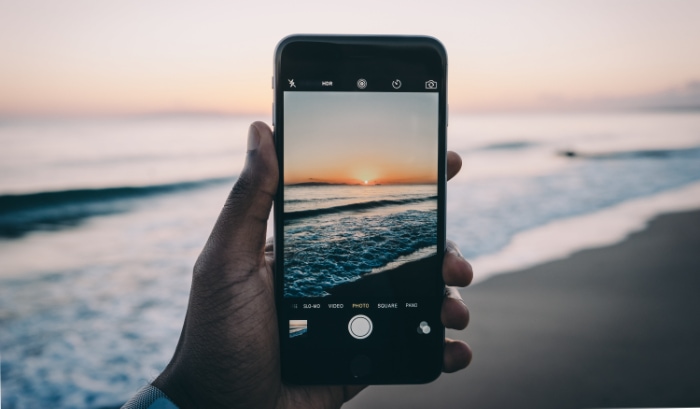HEIC vs. JPEG: Beyond Pixels and Quality

Digital images are everywhere, from the stunning photos on Instagram to the family pictures in your camera roll. But have you ever stopped to think about the formats these images are saved in?
JPEG, a familiar name to many, has been a reliable format for decades. Recently, however, a new player entered the scene: HEIC. Developed by the makers of the MPEG format, HEIC promises better quality at smaller file sizes.
History and Development
Digital photography and online imaging have a rich history, marked by continuous innovation and technological advances. Two of the most significant milestones in this journey are the development of JPEG and HEIC formats.
The Rise of JPEG
JPEG, which stands for Joint Photographic Experts Group, revolutionized digital imaging when it was introduced in the early 1990s. This format was born out of a need for efficient image compression techniques, as digital images were becoming more prevalent, and the need to efficiently store and transmit them was growing.
JPEG's ability to reduce file sizes significantly without a noticeable loss in image quality made it the go-to choice for digital photos. Its widespread adoption was driven by the internet boom and the growing popularity of digital cameras, making JPEG synonymous with digital imagery.
Emergence of HEIC
HEIC, or High Efficiency Image File Container, is a much more recent development, introduced in 2015 as part of the HEIF (High Efficiency Image Format) standard. Developed by the MPEG group, known for creating video and audio compression standards, HEIC was designed to be a step forward in image compression technology.
It offers better compression than JPEG, meaning that it can store high-quality images in smaller file sizes. This feature has made HEIC particularly attractive in the age of smartphones, where storage space is always at a premium.
Initially adopted by Apple for its devices, HEIC has been gradually making its way into the broader world of digital imaging.
Technical Specifications
Delving into the technical aspects of JPEG and HEIC reveals why they are engineered differently and how this impacts their performance. While both formats are used for storing images, their underlying technology – how they compress and store data – varies significantly.
JPEG: Compression Method and Quality
JPEG uses a compression method known as ‘lossy' compression. This technique reduces file size by selectively discarding less important information, especially details that the human eye might not easily perceive.
The process involves transforming the image into a frequency space and then compressing it, which sometimes leads to a loss in quality. Users can adjust the level of compression in JPEG, which directly affects image quality and file size.
The more an image is compressed, the smaller the file size, but this also leads to a noticeable decrease in image quality.
HEIC: Advanced Compression and File Structure
HEIC stands out with its more advanced ‘lossy' and ‘lossless' compression techniques, based on the High Efficiency Video Compression (HEVC) standard. This means HEIC can compress images to smaller sizes than JPEG without losing quality.
In addition, HEIC supports storing multiple images in one file, which is useful for sequences of photos or images with transparency. This format also allows for storing additional data like image edits and thumbnails, making it a versatile choice for various applications.
File Size and Storage Implications
When it comes to file size, HEIC generally offers a significant advantage. It can compress images to nearly half the size of JPEGs while maintaining similar, if not better, quality.
This efficiency makes HEIC an attractive option in a world where digital storage space is valuable, especially on mobile devices where storage capacity can be limited. For users who handle large volumes of images, such as photographers and graphic designers, the space savings offered by HEIC can be a game-changer.
Image Quality and Performance
Evaluating the image quality and performance of JPEG and HEIC formats is essential for anyone who deals with digital images. This aspect is particularly important for photographers, graphic designers, and even everyday users who seek to preserve the visual integrity of their photos.
Analyzing JPEG Image Quality
JPEG has been the standard for digital imaging for years, primarily because of its compatibility and ease of use. In terms of image quality, JPEG performs well under standard compression levels, offering a good balance between file size and visual clarity.
However, when images are compressed excessively to reduce file size, JPEG can suffer from quality degradation. This often manifests as blurring, loss of detail, and artifacts, especially in areas with high contrast or color variation.
For everyday use and moderate compression, JPEG offers satisfactory performance, but for high-quality prints or detailed graphics, the limitations become apparent.
Evaluating HEIC Image Quality
HEIC steps up in terms of image quality, particularly at higher compression rates. Thanks to its advanced compression algorithms, HEIC can maintain higher image quality at smaller file sizes compared to JPEG.
This is especially noticeable in images with vibrant colors and fine details. HEIC's ability to handle a wider range of colors and higher dynamic range also makes it superior for high-resolution displays and professional-grade photography.
Moreover, the format’s support for additional data, like depth information and alpha channels, enhances its versatility in complex imaging tasks.
Performance Comparison in Different Use Cases
When it comes to performance across various platforms and use cases, JPEG has the upper hand due to its universal compatibility. It is widely supported across almost all devices, operating systems, and web platforms, making it a safe choice for general use.
On the other hand, HEIC's performance is impressive in ecosystems that support it, like newer Apple devices and some modern software, but its compatibility issues can be a hindrance in broader applications. For instance, some older devices and software may not support HEIC natively, requiring conversion to a more compatible format like JPEG.
Compatibility and Usage

In the world of digital images, how well a format works with various devices and software is as important as its technical capabilities. This compatibility often dictates user choice and usability in different scenarios.
JPEG: Universal Support Across Platforms
JPEG's greatest strength lies in its universal compatibility. Since its introduction, JPEG has become the de facto standard for digital images across various platforms.
It is natively supported by almost all operating systems, software, and web browsers. This widespread support makes JPEG a versatile choice for users.
Whether you are uploading photos to social media, sending images via email, or working on graphic design projects, JPEG files are readily accepted and displayed without any need for conversion or additional software. This ease of use has cemented JPEG's place in the realm of digital imaging for the general public and professionals alike.
HEIC: Adoption Challenges and Available Support
HEIC, while offering advanced features, faces some challenges in terms of compatibility. Since it is a newer format, its support is not as widespread as JPEG's.
This is particularly evident when interfacing with older devices or software that haven't been updated to accommodate HEIC files. However, in ecosystems that do support it, such as newer Apple devices and some modern Windows and Android systems, HEIC works seamlessly, offering its full range of benefits including better compression and improved image quality.
Users need to be aware of these compatibility considerations when choosing HEIC, especially if they intend to share images with others or use them across different platforms.
Practical Considerations for Choosing Formats
For users, the choice between JPEG and HEIC often comes down to their specific needs and the devices they use. JPEG remains a safe and reliable choice for most situations due to its universal support.
It is particularly suited for situations where image files need to be shared widely or viewed on a variety of devices and platforms. On the other hand, HEIC is a better choice for users who primarily stay within an ecosystem that supports it, like Apple's iOS and macOS, where they can take full advantage of its superior compression and image quality.
Additionally, for those concerned about storage space on their devices, HEIC's efficient compression can be a significant advantage.
User Perspective and Recommendations
When it comes to selecting between JPEG and HEIC, the decision largely hinges on the specific needs and circumstances of the user. This section aims to provide practical advice and recommendations for different types of users, from professional photographers to casual smartphone users, helping them to navigate the choice between these two prevalent image formats.
Considerations for Photographers and Graphic Designers
For professionals like photographers and graphic designers, image quality and detail are paramount. HEIC, with its superior compression technique that preserves image quality at a smaller file size, can be particularly beneficial.
It's especially useful for those dealing with high-resolution images or working in environments with limited storage. However, professionals must also consider the end-use of their images.
If the final images are to be used in a setting that predominantly supports JPEG, such as for web graphics or client deliverables, sticking with JPEG might be more practical.
Advice for Everyday Users
Casual users, such as those taking photos with their smartphones, need to balance quality with convenience. If storage space is a concern and you're using a device that supports HEIC, such as a recent iPhone, using HEIC can help save space without sacrificing image quality.
However, if you often share images with others or use multiple platforms, JPEG's universal compatibility makes it a hassle-free choice. For everyday photography and sharing on social media, JPEG's slight compromise in image quality is usually not a significant issue.
Tips for Converting Between Formats
For users who need to navigate between JPEG and HEIC, understanding how to convert files efficiently is crucial. Many photo editing software and apps offer the ability to convert HEIC files to JPEG.
Additionally, some devices allow you to choose the format in which photos are saved. For instance, iPhone users can select whether photos are captured in HEIC or JPEG format.
Utilizing these conversion tools and settings can help in managing files across different platforms and devices.
Managing File Compatibility
It's important for users to be aware of the compatibility of their chosen format with their intended audience or platform. For instance, if you're submitting photos for a competition or a publication, checking the required format beforehand is essential.
Similarly, for graphic designers, understanding the format preferences of clients and the intended use of images (print, web, etc.) is key to ensuring smooth workflow and delivery.
Conclusion
Choosing between JPEG and HEIC for your digital imaging needs is a decision that hinges on balancing quality, compatibility, and convenience. JPEG, a long-standing standard, offers unmatched compatibility and ease of use, making it ideal for general purposes and wide sharing.
HEIC, with its advanced compression technology, provides superior image quality at smaller file sizes, appealing to those with high-resolution imaging needs or limited storage.
For professionals in photography and graphic design, the choice may lean towards HEIC, especially when working within compatible systems and prioritizing image quality.
Casual users and those focused on broad compatibility and ease of sharing will find JPEG more accommodating. The ability to convert between these formats allows for flexibility, enabling users to maximize the benefits of both according to their specific situations.
Understanding these formats and their implications on digital imaging is crucial in our increasingly visual world. Whether capturing life's moments, creating digital art, or sharing images across various platforms, knowing the strengths and limitations of JPEG and HEIC empowers users to make informed choices.
This knowledge not only enhances personal and professional projects but also enriches the overall digital experience in an era where images are a central form of communication and expression.


